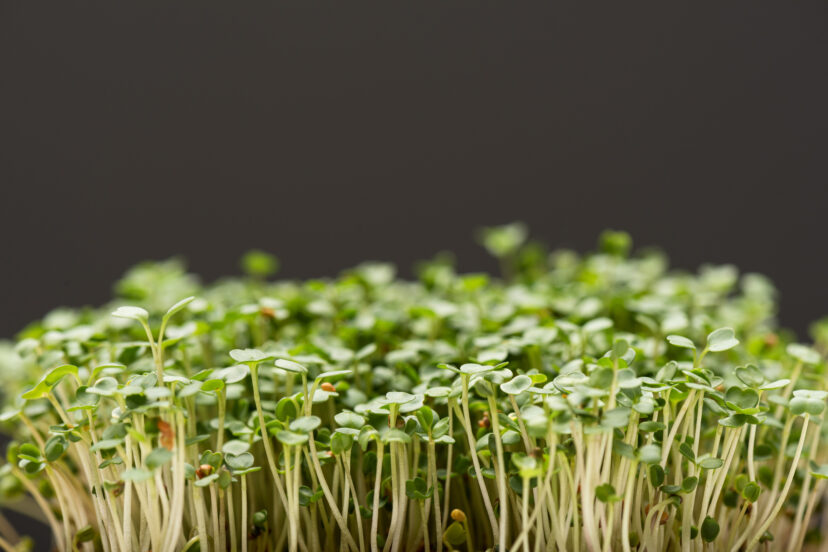Hydroponic Microgreens: A Comprehensive Guide
Introduction to Hydroponic Microgreens
Hydroponic microgreens have garnered significant attention for their remarkable benefits and challenges. Microgreens, the young seedlings of vegetables and herbs, have become a popular choice among health-conscious individuals and culinary experts. When grown hydroponically, these tiny greens are not only a powerhouse of nutrients but also an emblem of modern, space-efficient agriculture.
Understanding the Basics of Hydroponics
Before diving into the world of hydroponic microgreens, it’s essential to understand what hydroponics is. Hydroponics is a method of growing plants without soil, using mineral nutrient solutions in an aqueous solvent. This technique can be implemented in various forms, such as nutrient film technique (NFT), deep water culture (DWC), and aeroponics, each offering unique advantages for microgreen cultivation.
Benefits of Growing Microgreens Hydroponically
Microgreens hydroponically grown are not just space savers; they’re nutritional powerhouses. They require less water than traditional farming methods, making them a sustainable choice. Additionally, they have a faster growth cycle, allowing for quicker harvests and fresher produce on your plate.
Challenges in Hydroponic Microgreen Cultivation
However, this innovative method is not without its challenges. Maintaining the right balance of water and nutrients is crucial, as is ensuring adequate light and controlling environmental factors like humidity and temperature.
Setting Up Your Hydroponic System for Microgreens
Setting up a hydroponic system for microgreens can be an exciting project. Whether you opt for a simple home setup or a more advanced system, the key is to choose the right equipment and follow a step-by-step guide to ensure successful growth.
Selecting the Right Microgreen Varieties
Choosing the right varieties of microgreens is crucial for your hydroponic garden. Popular choices include radish, arugula, and kale, but the selection should be based on factors such as growth time, nutritional value, and personal taste preferences.
Nutrient Management in Hydroponics
Nutrients play a vital role in hydroponics. Understanding the needs of your microgreens and regularly monitoring and adjusting nutrient levels is crucial for optimal growth.
Lighting Solutions for Optimal Growth
Lighting is another critical factor. Grow lights, whether LED or fluorescent, must be chosen and used effectively to ensure your microgreens receive the right amount of light for photosynthesis.
Temperature and Humidity Control
Maintaining the ideal temperature and humidity is essential for the health of microgreens. Tools like thermometers and hygrometers can help in monitoring these conditions.
Water Management in Hydroponic Systems
Water quality and management are paramount in hydroponics. Techniques for efficient water use, such as recirculating systems, can significantly impact the success of your microgreens.
Dealing with Common Pests and Diseases
Like all plants, microgreens are susceptible to pests and diseases. Identification and prevention, along with organic control methods, are key to maintaining a healthy hydroponic garden.
Harvesting and Storing Microgreens
Harvesting at the right time is crucial for maximum flavor and nutritional value. Proper storage techniques also play a significant role in preserving the freshness of these delicate greens.
Innovative Recipes Using Hydroponic Microgreens
Microgreens are not just nutritious; they’re versatile in the kitchen. From garnishing gourmet dishes to enriching smoothies, they offer a fresh burst of flavor and nutrition.
Conclusion: Embracing the World of Hydroponic Microgreens
As we conclude, I encourage you to explore the world of hydroponic microgreens. Whether you’re a home gardener, a culinary enthusiast, or someone passionate about sustainable living, microgreens offer a unique and rewarding experience.
FAQs
What are the best microgreens to grow hydroponically?
The best microgreens for hydroponic cultivation include radish, arugula, kale, and mustard greens, known for their quick growth and rich flavors.
How long does it take to grow hydroponic microgreens?
Most microgreens can be harvested within 1-3 weeks after planting, depending on the variety and growing conditions.
Can hydroponic microgreens be grown at home?
Yes! With basic equipment and a little space, you can easily set up a hydroponic system for growing microgreens at home.
What are the common mistakes to avoid when cultivating hydroponic microgreens?
Common mistakes include overwatering, inadequate lighting, and neglecting nutrient management. It’s essential to monitor these factors closely for successful growth.
How can I ensure the best flavor and nutrition from my hydroponic microgreens?
Ensure optimal growth conditions, harvest at the right time, and use fresh, high-quality seeds to guarantee the best flavor and nutritional value from your microgreens.




